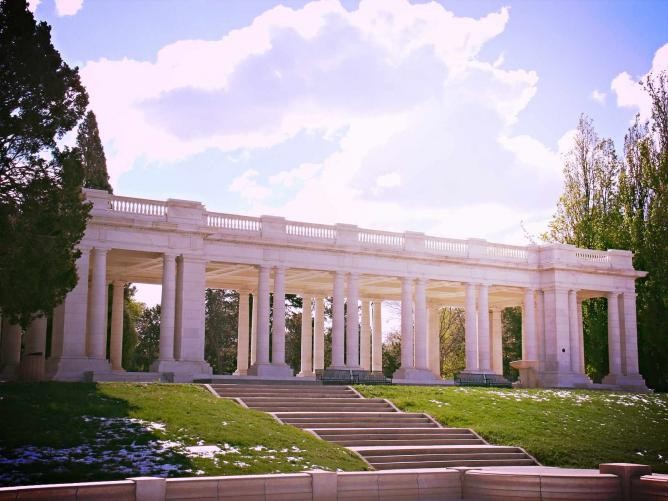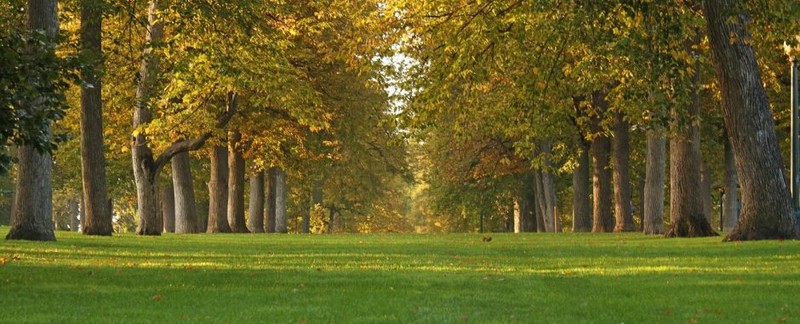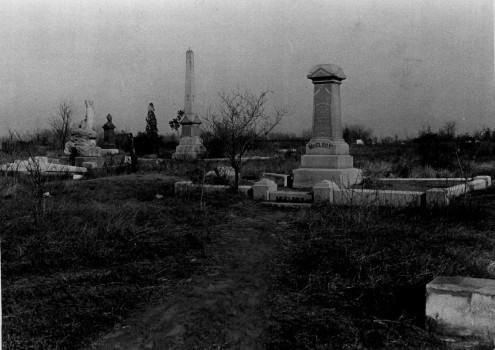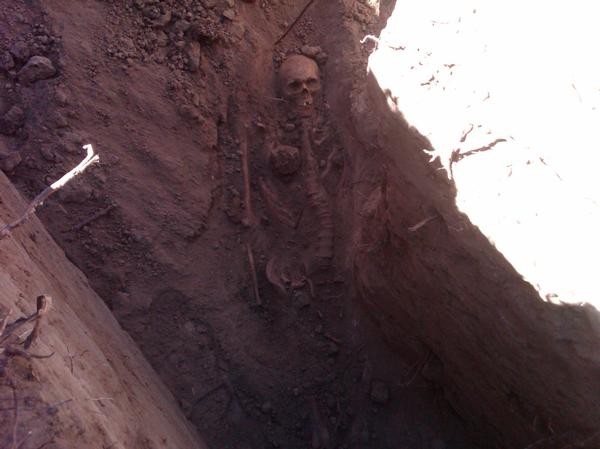Cheesman Park
Introduction
Text-to-speech Audio
Images
Cheesman Park pavilion (image from Culture Trip)

The park grounds (image from the City of Denver)

Historic photo of Mount Prospect Hill Cemetery, where Cheesman Park stands today (image from the Denver Public Library)

Skeletal remains uncovered in Cheesman Park in 2012 (image from The Denver Post)

Backstory and Context
Text-to-speech Audio
History of the Cemetery and the Park
Denver's first cemetery was established in 1858, the same year the town was founded by William Larimer [3]. A 320-acre tract of hills on sacred Arapaho land was designated for Mount Prospect Cemetery (later known as City Cemetery) [2; 3]. This same land would eventually become Cheesman Park and the Denver Botanic Gardens [2; 4]. The first two burials at Mount Prospect were a gambler named Jack O'Neal and a murderer named John Stoefel. Sources vary regarding the story behind these two men. Either way, it seems O'Neal was murdered outside a saloon for cheating, and Stoefel was a murderer (though whether he killed his own brother-in-law over a bag of gold dust, shot O'Neal, or both is unclear) [2; 3]. The cemetery was often referred to as "Jack O'Neal's Ranch" [1; 3]. As Denver grew and became overcrowded, typhoid and other diseases, as well as regular incidents of violence, filled the cemetery quickly, with separate areas for different races, religions, fraternal organizations, and veterans [2; 3]. Though Congressional action confirmed the use of the land as a burial ground in 1872, less than twenty years later, real estate promoters and Governor John Evans convinced Congress to change the land use to create a city park [3; 4]. Grateful to obtain permission to vacate the badly-managed and by then controversial Mount Prospect Cemetery of burials, the city named the new institution Congress Park [1; 2; 3]. In March of 1893, removal of bodies began. Since there were no death records apart from headstones (and many graves in pauper's cemeteries were unmarked), the estimated number of total burials is problematic, though some claim the cemetery held as many as two thousand bodies [2; 3]. Of these, 4,200 were removed in the 1890s, 788 of which were reinterred at Riverside Cemetery. Others, particularly Civil War veterans and Odd Fellows burials, went to Boot Hill. Vacated pioneer graves were planted with trees [2]. Accusations abounded during the removal of bodies: the Denver Republican newspaper reported "ghastly treatment of remains" including "ripping of clothing and walking on remains," on March 19, 1893, and workers were also accused of grave robbing, hacking up bodies to avoid digging up most of the graves, and presenting individual remains as belonging to multiple burials [1; 2; 3]. In August of the same year, families were given 90 days to remove the remains of the deceased, after which no more bodies would be exhumed (however, removals continued until 1950) [2; 3]. Strangely, the Catholic and Jewish areas of the cemetery continued to be active burying grounds until after the turn of the century [2]. The park's history as a burying ground, the controversy surrounding the grave removals, and the fact that many burials remain and continue to be unearthed in both Cheesman Park and the adjoining Denver Botanical Gardens, have earned the park a reputation as being haunted [1; 2; 3].
Park grading began in 1894, and the park design was completed by Reinhard Schuetze four years later. Schuetze's design called for an hourglass-shaped, expansive lawn surrounded by plantings including a forest, with a neoclassical pavilion surrounded by gardens at the highest point, offering views of the Rocky Mountains on one side and the Denver skyline on the other [4]. In 1907, Walter S. Cheesman died, and the park was renamed in his honor. Cheesman had arrived in Denver in 1861. Born on Long Island, New York, in 1838, Cheesman had worked as a druggist in Chicago prior to his move (via ox cart) to join his brother, who owned a drugstore in Denver. The brothers sold potable spring water in a city without sanitary infrastructure, as well as the typical medicine, chemicals, and basic necessities associated with drugstores. The success of their business allowed Cheesman to branch into real estate and railroad interests, as well as establishing infrastructure for Denver's water system and helping to found the Denver Chamber of Commerce. His widow and his daughter donated the Cheesman Park Pavilion (designed by Willis A. Marean and Albert Julius Norton and constructed of Colorado Yule marble) in his memory in 1908 [3; 4]. Sadly, the architect of the park, Reinhard Schuetze, died in 1910, the same year the Pavilion was completed, but before the rest of his design was fully realized. Most of the park's present roadways and walkways are consistent with Schuetze's original plans, though traffic control has necessitated some alterations, including, in 1912, the complete removal of a section of Franklin Street, which was then converted into a pedestrian mall. The linden trees lining the mall were planted by Schuetze, while his successor, DeBoer, was responsible for much of the park's forest plantings, which were carefully chosen to provide year-round color, texture, and form. Where the children's playground near the park's East 12th Avenue entry stands today, Schuetze had planned a lily pond. Formal gardens were added to the north of the Pavilion, as were a wide set of steps descending to the lawn, basins and fountains in an Italian water garden to the west, and a formal rose garden. Some of these features were removed, altered, or refurbished in the 1970s. Across the north lawn from the Pavilion is Schuetze's "Japanese Tea House," a rustic, open pavilion sporting peeled log support posts [4].
The Pavilion has long served as a gathering point for
picnics, special events, dancing, musical performances, and as a shelter for
victims of recurring floods from nearby Cherry Creek. From 1934 to 1972, it was
the performance space for the Denver Post's Summer Opera, and today it is used
for outdoor concerts, informal gatherings, drum circles, dance performances, and
weddings [2; 3; 4]. The park itself serves as a greenbelt, jogging and picnic
spot, playground, and an area for kite flying, games, and pet walking [2; 3].
Local pagans also hold ceremonies in the park [3].
